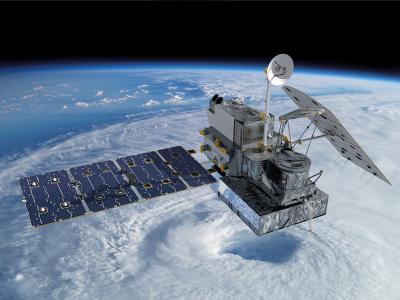On the Radar: Hot Spots for Serious Storms
Large storm systems, or mesoscale convective systems (MCSs), play a key role in the global hydrological cycle and in modifying atmospheric circulation. But because of a lack of observational data over Earth’s mid- and high- latitudes, global distribution of MCSs has remained elusive. Now, researchers at the Department of Energy’s (DOE) Pacific Northwest National Laboratory and the University of Washington have validated the capability of a three-dimensional cloud and precipitation radar on the Global Precipitation Measurement (GPM) satellite in capturing MCSs over these remote areas. With the GPM radar dataset, researchers were able to generate a global map of MCS distribution, which revealed several “hot spots” for MCS activity.
Cloud and precipitation characteristics observed by the GPM spaceborne radar allowed researchers to establish, for the first time, a global map of MCSs in mid- and high-latitude regions. This comprehensive dataset will help researchers to study and monitor MCSs globally, especially in remote regions, and inform predictions of severe weather and climate.
As the largest form of deep convective storms, MCSs typically portend hazardous weather including heavy rain, hail, and strong winds. However, observations for understanding MCSs and predicting weather have been lacking over the remote mid- and high-latitude (beyond 30°) regions. The GPM core satellite, launched in 2014, scans a 400-kilometer swath from 65°S to 65°N every two to three hours, providing near-global coverage. Equipped with a dual-frequency precipitation radar, data obtained by this powerful observational platform has made it possible to establish the occurrence of MCSs globally. Researchers evaluated the accuracy and the detection capability of the GPM radar dataset using high-quality data from the geostationary satellite and Next-Generation Radar (NEXRAD) network, densely distributed over the continental United States. Over a 3-year period (2014-2016) of concurrent observations, more than 70 percent of GPM-detected extreme storms were confirmed as MCSs by the MCS tracking dataset over the continental United States. By applying the GPM-based MCS detection method to other regions, the researchers established a global map of the occurrence of MCSs.

